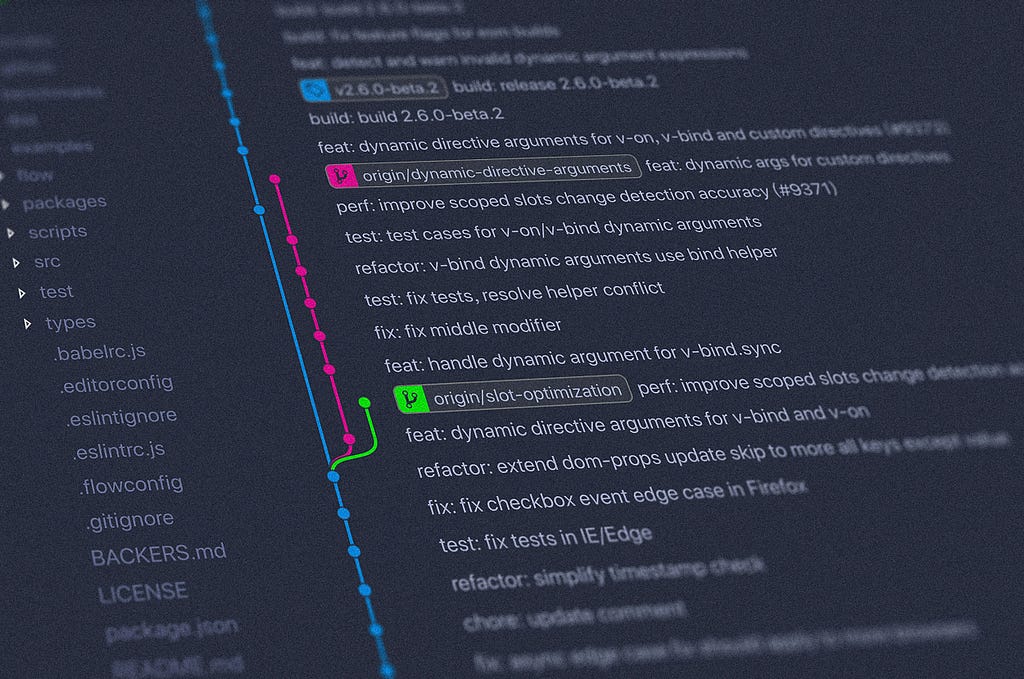This content originally appeared on Level Up Coding - Medium and was authored by Jian Ruan
At the beginning of this year, I opened a markdown file titled “Q2 Fitness Goals” and realized something unsettling: it was identical to my Q1 Fitness goals. And Q4 from the previous year. The timestamps had changed, but I hadn’t.
As an engineer who ships code daily, this hit differently. At work, I live by the mantra “ship early, ship often.” Every bug fixed, every feature deployed — it’s all tracked, versioned, measured. My professional life runs on two-week sprints. But my personal life? It was running on a release cycle measured in years.
I sat there, staring at those unchanged goals, and asked myself: What if I treated my personal growth like I treat my code?

The Experiment: Git for Life
I did something that might sound strange to non-engineers: I created a private Git repository for my life.
Inside, markdown files for everything — career goals, financial targets, relationship aspirations, health metrics. Each update became a commit. Each commit, a snapshot of my evolving thinking.
At first, it felt ridiculous. Who tracks their life in version control? But after a month, the git history revealed something profound: commit frequency is a proxy for personal growth velocity. The areas where I was thriving had daily commits. The stagnant areas? Their files gathered digital dust with timestamps from months ago.
But tracking wasn’t enough. I needed a way to accelerate the iteration cycle. That’s when I started experimenting with AI as a growth partner.
AI: The Mirror with an Amplifier
I started using Claude Code as my weekly personal growth review partner in addition to my daily coding workload. What used to feel like heavy quarterly goal-setting sessions became lightweight Sunday check-ins.
The more I worked with AI, the more I realized AI is a mirror with an amplifier. When I’m clear about what I want, AI helps me move ten times faster. When I’m vague, it reflects that vagueness back, magnified. If clarity determines output quality in AI, maybe it determines life quality too.
When I typed vague prompts like “Help me plan my fitness goals,” I got generic workout schedules. But when I got specific — “I want a plan aligned with major personal training methodologies like ACE and NSCA, focusing on strength training while learning anatomy and biomechanics” — suddenly I had a learning curriculum that actually excited me.
The pattern became clear: Clarity in equals power out. The quality of my personal growth became directly proportional to the precision of my thinking and how articulate I could convey it.

The Unified Cycle
In software, we have a saying: “Shipping is the heartbeat of a company.” The development cycle is sacred:
Software Development Cycle
- Discover → Explore the problem space
- Design → Define the architecture
- Build → Write and test code
- Deploy → Launch to production
- Support → Debug, refactor, scale
Every loop teaches us something. Every iteration makes the product better. The faster we complete a cycle, the faster we improve.

I realized I could apply the same framework to personal growth.
Personal Growth Cycle:
- Discover → Self-awareness through journaling with AI
- Design → Goal-setting with clear metrics
- Build → Testing habits in controlled experiments
- Deploy → Executing in the real world
- Support → Reflecting and refining with AI assistance
I connected Claude to my Linear workspace through MCP (yes, I use Linear for personal project management too). Every Sunday, I’d review my “life sprints” with AI as my pair programmer for personal growth.

Shipping Better Versions of Yourself
Six months in, I find myself doing less but achieving more. My daily task count dropped while my impact soared.
The exhaustion was different too. Instead of the mindless grind of checking boxes, I was doing heavy mental work. Each clarified intention, each refined prompt, each judgment call — these were reps in a cognitive weight room.
Today, my personal growth repository has over a hundred commits. Some files change daily. Others stabilize once I’ve found what works. The git diff between who I was last year and who I am today is substantial.
But the real transformation isn’t in the tools — it’s in the mindset. I now think in iterations. I measure in commits, not quarters. I debug my habits like I debug my code.
AI didn’t give me this system. It revealed what was always possible: treating growth as a practice of continuous deployment, where every day is a chance to ship a slightly better version of yourself.
The Heartbeat Continues
Iteration is the heartbeat of growth — in software and in life.
For my next post, I’d love to share how I use AI agents in my daily coding workflow. But I wanted to start here, with something universal: the realization that we all have the power to version-control our lives.
We just need to start committing.
Version Control for Life: How AI Changed the Way I Grow was originally published in Level Up Coding on Medium, where people are continuing the conversation by highlighting and responding to this story.
This content originally appeared on Level Up Coding - Medium and was authored by Jian Ruan
Jian Ruan | Sciencx (2025-08-27T14:36:32+00:00) Version Control for Life: How AI Changed the Way I Grow. Retrieved from https://www.scien.cx/2025/08/27/version-control-for-life-how-ai-changed-the-way-i-grow/
Please log in to upload a file.
There are no updates yet.
Click the Upload button above to add an update.
